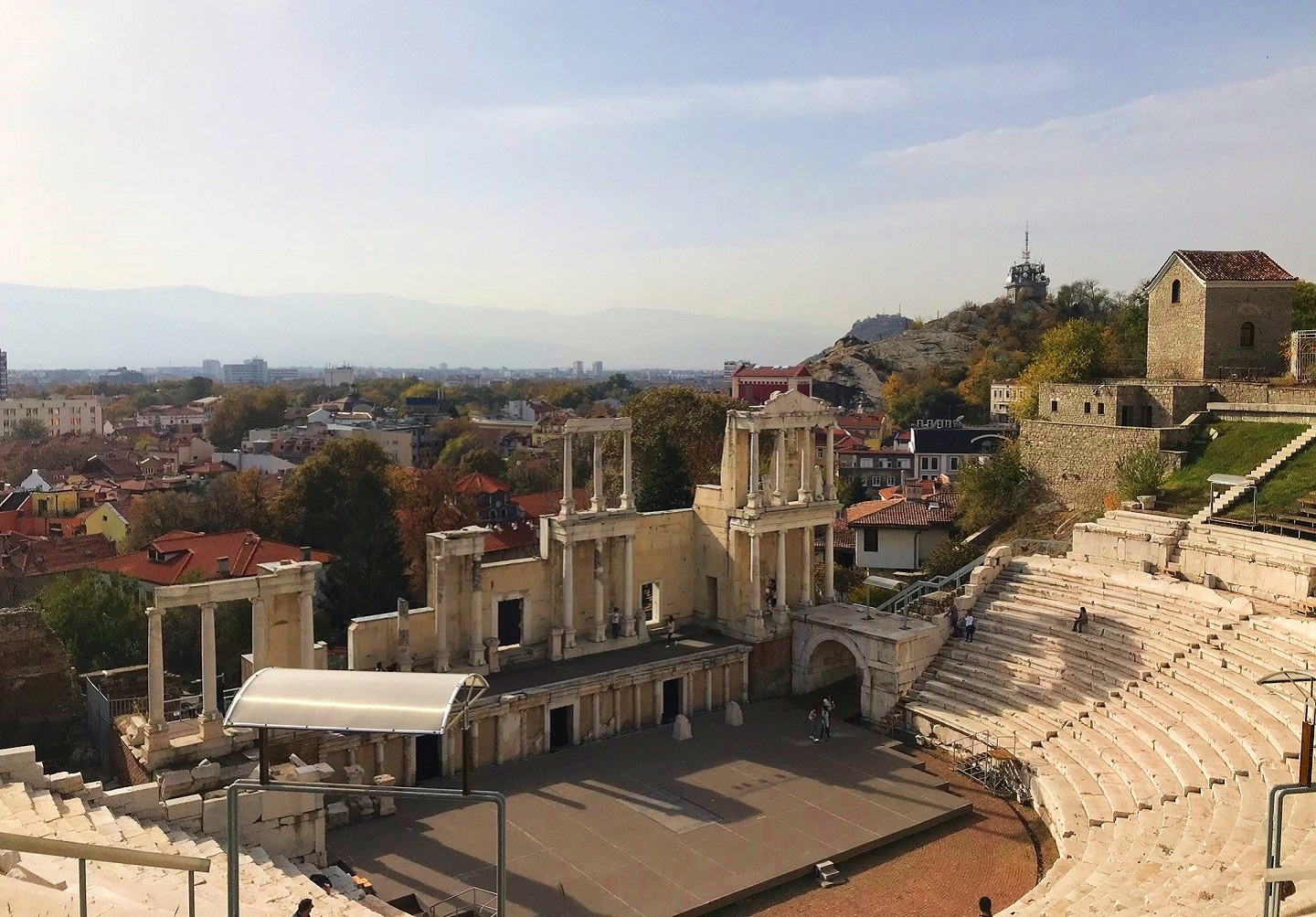
Plovdiv's ancient Roman Theatre offers a stunning panoramic view of Bulgaria's second largest city (All photos: Mae Chan/The Edge)
As far as old European cities and destinations go, Bulgaria has sort of been left by the wayside. Even among the historically and culturally rich Balkan states, the republic is often passed over by tourists despite being one of the larger countries in Southeast Europe.
The country has been outshone by its neighbours, which include cultural and historical meccas like Greece and Turkey, Croatia’s natural beauty and even North Macedonia, which has an exotic appeal as part of Alexander the Great’s ancient empire. Nonetheless, it was very exciting to land in the Bulgarian capital of Sofia on a sunny and cloudless but chilly morning, via Turkish Airlines from Kuala Lumpur, after a short transit in Istanbul.
With admittedly little prior knowledge about the country, beyond a vague grasp of its geopolitical history, its communist past, its famous Rose Valley and its weightlifters, getting to know Bulgaria from scratch was refreshing, and it came with a few interesting surprises.
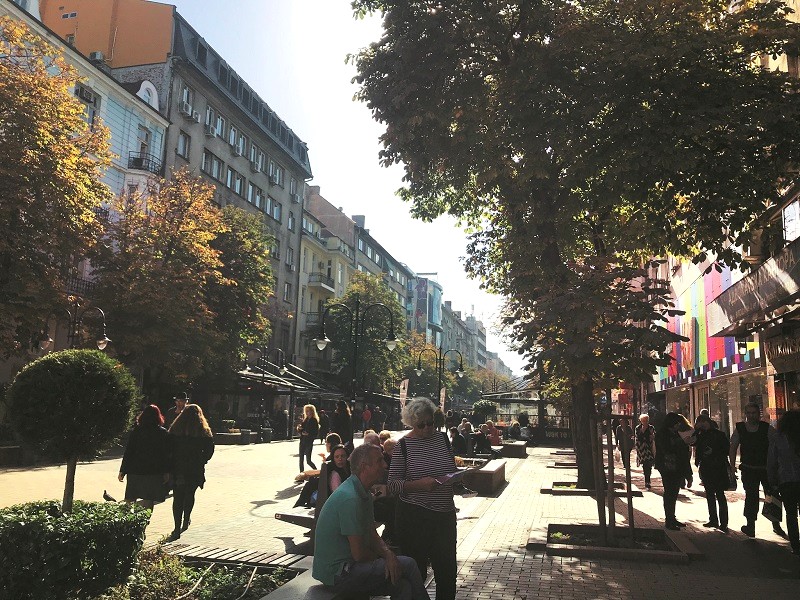
Having joined the European Union in 2007, Bulgaria is considered an up-and-coming country, economically as well as in terms of what it has to offer — from golf to skiing and wine tourism, for example. It has a rich history going as far back as the seventh century when it was invaded by the Bulgars, who founded the first Bulgarian empire in AD681 after defeating the Romans.
It was ruled by the Byzantine empire, and subsequently the Ottoman empire, for about five centuries. The Russo-Turkish War of 1877 and 1878 liberated the Bulgarians and led to the forming of the Third Bulgarian State and with it, after World War II, the ushering in of communism. In 1989, Bulgaria transitioned into a republic.
Sofia
With a population of 1.5 million people, Sofia is not large by most standards, but it bears significant relics of the nation’s colonised history and its cultural legacy. The smooth cobblestone streets that have a golden hue in the sunlight herald the entrance into what, in hindsight, seems to be a city negotiating the old and the new, searching for how its glorious past fits into the future.
At its heart is the monumental St Alexander Nevsky Cathedral. Towering over the skyline of the centre of Sofia with its gold-plated dome and pastel green roofs, it was once the largest Orthodox Christian church in the world and can accommodate more than 5,000 people at a time.

Named after a 13th-century Russian prince and hero in the aftermath of the Russo-Turkish war, the cathedral was built at the turn of the 20th century as a tribute to fallen soldiers and a symbol of gratitude and celebration of the liberation from the Ottoman empire. The Neo-Byzantine-style building survived bombing in World War II, despite taking heavy damage, and today remains a place of worship for the country’s 90% Orthodox Christian population.
Within the grandeur of its aged but ornately decorated walls, which are illuminated by a 27m-tall central chandelier that weighs about 2,500kg, one can see the wealth of Orthodox symbolism and iconography that fills the five-nave interior space. Looking up at the central dome one can see a rare depiction of God in bodily form — a man with white hair and beard. Also painted is a baby Jesus Christ, symbolising his divinity.
Sofia does not lack cathedrals. For those who may prefer a more intimate church, just a short distance from the Alexander Nevsky Cathedral is the city’s namesake St Sofia Church. Its understated exterior covers a rich history. It was used as a mosque during the Ottoman occupation, an execution ground, army storage space and even as the home of the city’s fire brigade. We are told of a belief that the church — which also survived two earthquakes — cannot be torn down as, whenever that is proposed, someone dies.
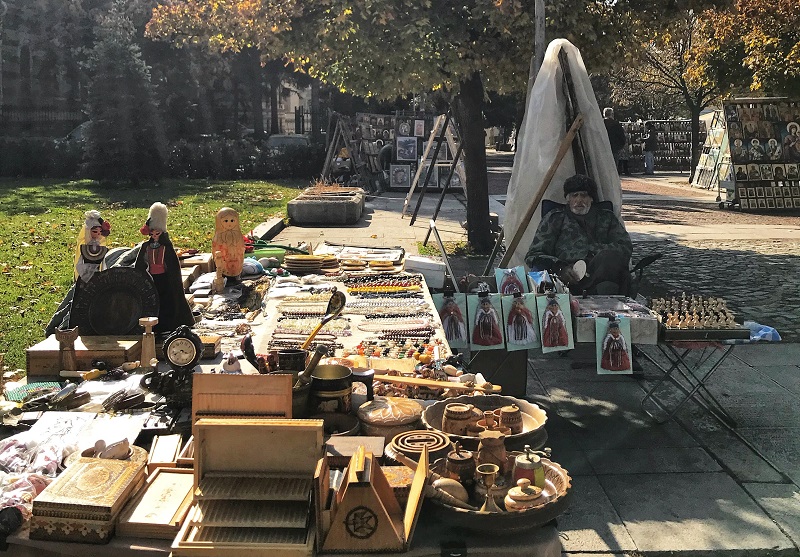
The city’s oldest bazaar is just a stone’s throw away, though these days, it is an open secret that it is expensive and hardly anything is original or worthwhile. Most shopping is done at Vitosha Boulevard instead — a broad, long street with restaurants, bars, local and international fashion retailers and souvenir shops. That said, meandering through the bazaar, especially on a sunny day, is enjoyable.
Further along the street from the bazaar is the “Russian side” of town, marked most strikingly by the Church of St Nicholas the Miracle-Maker, or as it is more commonly known, the Russian Church. Built on land owned by the Russian embassy in Bulgaria, it was constructed to serve the Russian migrant population during the communist era. As communist teachings tend to be hostile to religion, the government tried to stem Christianity and its practices among the Bulgarians.
What was supposed to be just a chapel for the Russians during this time became a landmark. Archbishop Seraphim, who was canonised by the Bulgarian Orthodox Church in 2016, is the reason many flock to the church today to write letters to him.
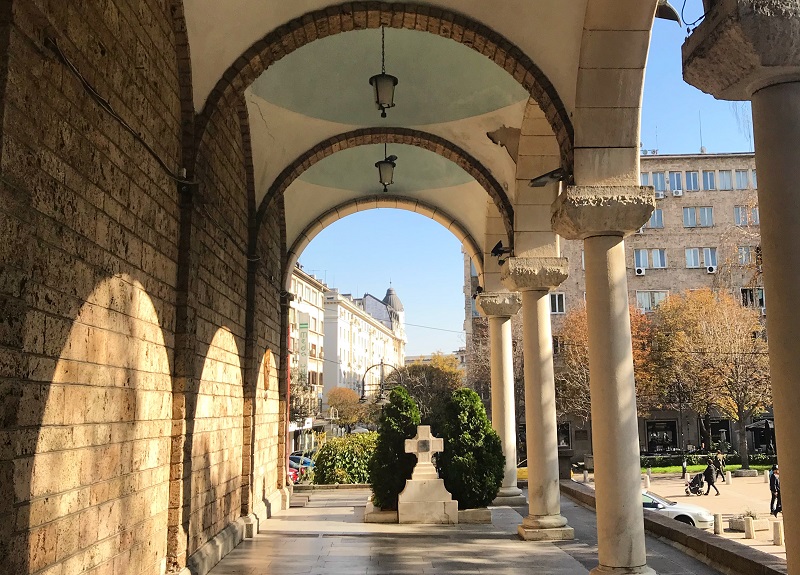
Then there is the St Nedelya Cathedral, which dates back to the 10th century and was revamped in the 19th century by the Diocese of Sofia. Its central location in the main town square makes it a popular church and even on a weekday afternoon, residents were queuing for a quick prayer. The cathedral was the site of a bloody attack in 1925 during the funeral of general Konstantin Georgiev, which was attended by many prominent Bulgarians. Communist activists set bombs in the cathedral and blew up the roof.
Just around the corner is perhaps the most intriguing of Sofia’s landmarks. Flanked by St Nedelya on one side and the city’s only active mosque on the other (across a highway), the Banya Bashi, and further on, Largo, a socialist architectural monument — the five-star Sofia Hotel Balkan and its adjoining casino are housed in a grand, historical building complex.
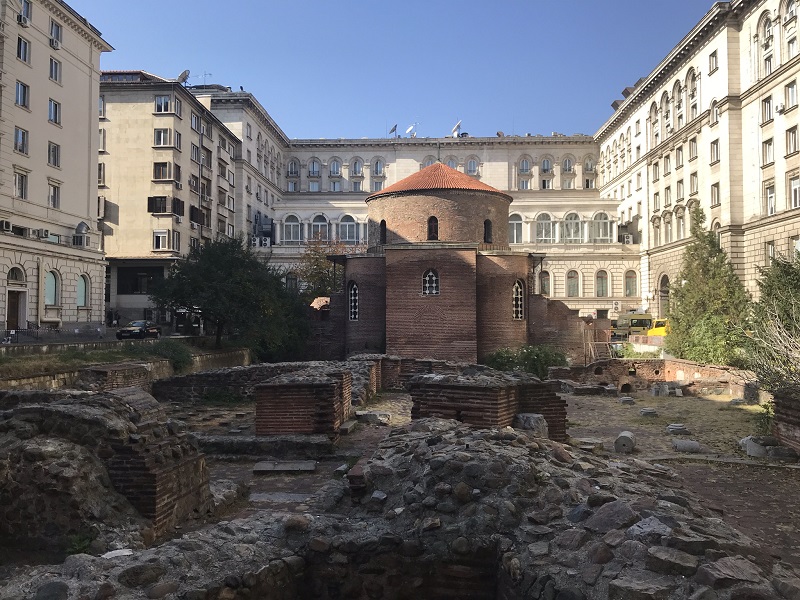
On the other side of the complex sits the Bulgarian president’s office, which in most countries would be off-limits to tourists. However, the only indications of official business are two striking guards at the front (you are allowed to get close and try for a photo, but don’t expect a smile) and a steady flow of sedans picking up and dropping off important visitors or ministers.
Just to the left, a wide arch allows anyone to freely walk through and find the Church of St George’s red brick rotunda, one of the oldest buildings in Sofia. Now an archaeological site at the centre of the presidential office complex, the rotunda rests in what was the ancient town of Serdica during the Roman empire, placing the historic remnants strategically at the heart of modern Bulgaria.
Plovdiv
Where Sofia offers a historical overview of monumental scale, the city of Plovdiv, about two hours southeast on the banks of the Maritsa River, is the heartbeat of the country’s cultural heritage. Named the 2019 European Capital of Culture, this hidden gem, which is as ancient as Troy, had its foundations laid about 2,300 years ago by the father of Alexander the Great, Philip II, who captured it in 342BC from the Thracians en route to Istanbul.
But it was during the Renaissance that Plovdiv flourished, becoming a hub for the arts and literature. Today, Plovdiv Old Town features many 18th and 19th century houses and buildings in a distinctive style called Plovdiv Baroque, from its National Revival architecture period. Dotting its three hills are Turkish-style houses from the Ottoman days. The ground floor used to house livestock and serve as storage space and there are no balconies on the upper floors.
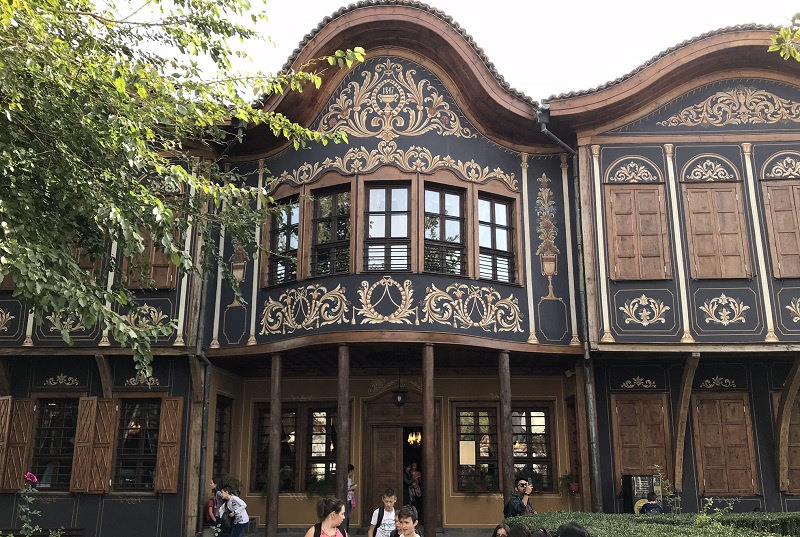
As you walk along the steep, narrow cobblestone streets, you can see the shift towards Bulgarian architecture. Exemplifying its beauty is the Hindliyan House, built in 1835, its opulence and ornate detailing a celebration of independence from the Ottomans, the establishment of a national identity and with it, the growth of the economy and intellectualism. Among the merchants was successful Armenian trader and landowner Stepan Manuk Hindliyan, who got his nickname after he travelled to India. Together with three other wealthy Armenian families in Plovdiv, Hindliyan built some of the old town’s most opulent homes.
Another example is the Georgiadi House, a symbol of the 19th-century style of symmetrical architecture, and the Kuyumdzhiev House, which is now the regional ethnographic museum. Its expansive size and lovely garden earned it its nickname, the “King’s Residence”.
Put on a good pair of walking boots and give yourself at least two hours to wander through the hills of old Plovdiv, at the top of which you will be rewarded with a panoramic view of the city from the Roman theatre. One of the world’s best-preserved Roman theatres, it still plays host to concerts today.
Rila Monastery
Further up towards the source of the Maritsa River is the majestic Rila mountain range and, nestled within it, close to 1,200m above sea level, is arguably what puts Bulgaria on the must-visit list — the Monastery of Saint Ivan of Rila. The 8,800 sq m fortress-like Unesco World Heritage site is a pilgrimage destination for Orthodox Christians around the world. Founded more than a millennium ago by the Bulgarian hermit Ivan Rilsky, it is still an active monastery. Destroyed, rebuilt and reconstructed many times, its latest iteration was constructed largely in the 13th and 14th centuries, when the feudal lord Hrelyo Dragovol fortified it. During the National Revival Period in the 18th century, the monastery underwent more large-scale building works.
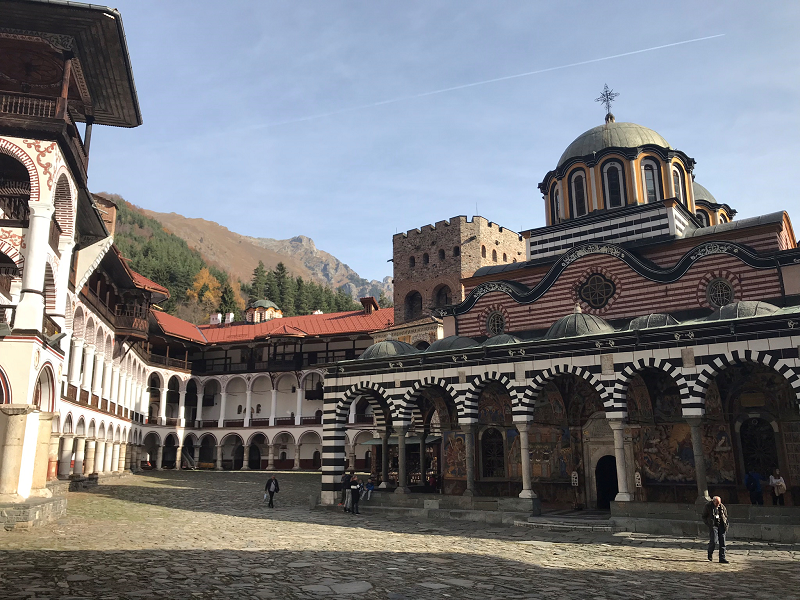
Apart from offering a glimpse into the simple lifestyle of its monks then and now, the Rila Monastery is also home to a famous library where important Bulgarian written records — such as 9,000-year-old books and hundreds of manuscripts that have either been written at Rila, donated or bought — are kept. A history museum offers a collection of some 35,000 religious and cultural artefacts, including the precious Cross of Rafail. On a single piece of wood measuring 81cm by 43cm, the creator, a monk named Rafail, took 12 years to carve 104 religious stages and 650 small figures. He lost his eyesight when it was completed in 1802.
The centrepiece of Rila Monastery is The Nativity of the Virgin Church in the middle of the complex, made by a master builder named Pavel Ivanovich from 1834 to 1837. Combining medieval elements and Baroque spatial principles, the building’s architecture is different from other styles in the Balkans. Also of note is that outside the complex in the farthest, Northeast corner, the Hermitage of St Ivan of Rila is located at the cave where Ivan first lived in and where he was initially buried. Turned into a national museum in 1961, with its surrounding grounds designated a nature park, the monastery stands tall as a wonder that has seen the passing of empires both great and ancient.
This article first appeared on Apr 29, 2019 in The Edge Malaysia.


